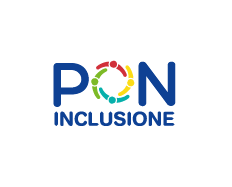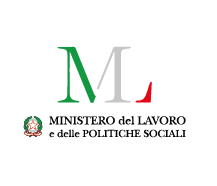FAQs EN
- Home
- FAQs EN
General Questions
What is illegal gang mastering
What is illegal gang mastering?
Art. 603 bis of the Italian Criminal Code, "Illegal brokering and labour exploitation.
Illegal labour brokering or gang mastering is done by those who recruit labour to allocate it to work with third parties in conditions of exploitation.
Both those who recruit (the “gang masters”) and those who "use, hire or employ labour" (the employers) commit a crime by subjecting workers to conditions of exploitation.
IN ITALY THE WORKER IS NOT PUNISHED FOR THE SOLE FACT OF WORKING WITHOUT A CONTRACT OR WITHOUT A RESIDENCE PERMIT.
WHAT IS THE MEANING OF “labor exploitation”?
Italian law does not explain it but indicates elements that can help recognize a situation of exploitation. You can find them below.
Law:
- «La reiterata corresponsione di retribuzioni in modo palesemente difforme dai contratti collettivi nazionali o territoriali stipulati dalle organizzazioni sindacali più rappresentative a livello nazionale, o comunque sproporzionato rispetto alla quantità e qualità del lavoro prestato»;
- 'The repeated payment of wages in a way that is clearly different from the national or local collective agreements stipulated by the most representati nve trade union organizations at national level, or in any case disproportionate to the quantity and quality of the work performed';
Practical examples
The pay is much lower than provided for in the national collective agreements signed by the trade unions;
the pay is disproportionate to the quantity and quality of the work performed (e.g. 4 euros per hour);
the pay received is different to the one indicated in the payroll;
the employment contract is unclear about who the employer is, the timing, etc.;
there is a disproportion between the hours and the tasks provided for in the contract;
there is a difference between the tasks provided for in the contract and those actually performed.
2.«la reiterata violazione della normativa relativa all'orario di lavoro, ai periodi di riposo, al riposo settimanale, all'aspettativa obbligatoria, alle ferie»;
"The repeated violation of the rules regulating working time provided for in the collective bargaining agreements for each type of work at national level. For example, you can work for up to 8 hours a day barring overtime, it is mandatory to have at least one day of rest per week and a certain number of holidays per year."
Practical examples:
Failure to comply with the limit of working hours (e.g. the employee works more than eight hours without compensation for overtime);
Lack of rest, including weekly (e.g. more than six hours a day without break; work seven days a week).
3.
- «La sussistenza di violazioni delle norme in materia di sicurezza e igiene nei luoghi di lavoro».
When working, it is the employer's job to ensure that there the work environment is safe and clean for the employee.
Practical examples:
Lack of safety at work (e.g. lack of shoes, helmets and suitable equipment, lack of protective equipment);
Lack of toilets, presence of mice, etc.
4.
- «La sottoposizione del lavoratore a condizioni di lavoro, a metodi di sorveglianza o a situazioni alloggiative degradanti».
Forcing the employee to work and/or live in humiliating conditions, being watched over in a humiliating manner (e.g. by gang masters/watchers).
Practical examples:
Work in the sun without drinking, no permission to go to the toilet;
Transportation to workplaces provided by gang masters for a fee;
Workers supervised by the same gang masters or by the employer with offensive methods;
Workers forced to sleep in shacks;
The worker lives in the same place where he works, which is not suitable for humans.
What are collective bargaining agreements?
They are national contracts negotiated through collective bargaining for employees by one or more trade unions with an employers' association, which regulate the terms and conditions of employees at work in a given working sector, to be referred to for everything which is not provided for in the personal contract.
What is the meaning of “state of need”?
This sentence defines the "state of need" "not as a state of necessity such as to absolutely annihilate any freedom of choice", but as "an urgent worry which, by limiting the will of the individual, induces him/her to accept manifestly disparate and non-negotiable conditions ..." (Italian Court of Appeal. September 9, 2019 n 39425).
Examples:
Economic problems for which the worker cannot satisfy basic needs such as food and housing, so he/she cannot really choose under what conditions to work.
The worker is forced to accept impossible working conditions, perhaps because he/she does not have documents or a decent home, or he/she has gotten into debts to get to Italy.
What does it mean “TO TAKE ADVANTAGE”?
It is necessary that the employer or gang master took advantage of the worker's state of need. That is, that they knew the worker's situation of need (e.g. they knew that he did not have documents When he worked for them), therefore they forced him to accept those working conditions.
The employer knows that the worker is staying in Italy illegally;
The employer is aware that the worker has no other means to live;
The employer is aware that the worker has a debt to repay.
QUESTIONS TO DETECT INDICATORS OF EXPLOITATION AND PSYCHOLOGICAL ELEMENTS NECESSARY TO MAKE UP THE CRIME
Indicator: Useful questions to understand the situaion:
The repeat payment of wages which are clearly different from national or local collective bargaining agreements negotiated by the largest trade union organizations at national level, or in any case disproportionate to the quantity and quality of the work performed.
- What duties do you perform at work?
- How much do you get paid?
- How often do they pay you?
- Do they pay you in cash/bank transfer?
- Do they pay you in other ways?
- Who pays you? The employer?
- Do you receive a paycheck?
- Do you know if they pay your benefits? Do you know what benefits are?
- Does the employer/intermediary also give you meals and lodging?
If yes:
- Does the employer/intermediary take a fee off your pay or do you give them a sum for the services they offer you?
How do you arrive get from your home to your workplace and vice versa? Does your employer/intermediary provide for your transport
Repeated violation of the Italian legislation on working time, rest periods, weekly rest, compulsory leave, holidays.
- Do you work every day or on call?
- How much notice do you get before you are have to go to work?
- Do you get paid by the hour or by result?
- How many hours do you work in a day?
- Do you have breaks at work? How long do they last?
- How many days in a week do you work?
- Have you ever had days off? Were they paid?
- Have you ever gotten sick and didn't go to work? What were the consequences? Have you been paid anyway?
Existence of violations of safety and hygiene regulations in the workplace.
- Do you have access to toilets, drinking water, refreshment points in the workplace?
- Have you ever been visited by an occupational doctor?
- Do you work with chemicals products?
- Do you move weights during work?
- Have you been given safety and personal protective equipment?
- Have you ever been told what to do in case of danger?
- What happens if someone gets hurt on the job?
- Did anyone ever get hurt during working hours? If so, do you know if the necessary notifications were (for insurance purposes) to INAIL?
Sottoposizione del lavoratore a condizioni di lavoro, a metodi di sorveglianza o a situazioni alloggiative degradanti
The worker is subjected to degrading working conditions, surveillance methods or housing situations.
- Has the place where you live been indicated to you by your employer/intermediary?
- What are the conditions of the place where you live?
- Who supervises you during your working hours?
- If a worker does not work well, what happens? What kind of punishments are given?
- Who organizes your work?
- Has the employer/intermediary ever threatened you either physically or to report you to the police or fire you? Why?
New decree flew 2023
new decree flew 2023
Answer
Source: https://www.anfos.it/sicurezza/agricoltura/
The elements that affect the panorama of agricultural enterprises in Italy are numerous and contribute to modifying their overall number, structure, size, human resources and productivity.
The aspects related to the economic crisis of recent years, together with the growing challenges related to environmental sustainability that impose severe and onerous measures on farmers, as well as the volatility of the prices of land products and legislative changes in European economic policy, have created a phenomenon of involution of agricultural enterprises, in all Italian regions, which in the last ten years have decreased by more than 30%, a situation which has mainly affected small-sized farms.
Aspects related to workplace safety issues also play an important role in this phenomenon. Agriculture is one of the sectors at greatest risk, both in the extent and frequency of reported accidents, and therefore requires particular attention and the involvement of the Bodies and Institutions that deal with developing protective and preventive measures to protect health and the safety of agricultural operators.
The general key concepts for the protection of agricultural workers, provisions for employers, technical, procedural and organizational preventive measures, and the use of protective devices are already introduced within Legislative Decree 81/08. Without prejudice to the obligations of the employer in terms of safety, it is useful to remember that Article 21 of Legislative Decree 81/08 also extends to self-employed workers, including direct farmers and members of simple companies operating in the agricultural sector, two obligations previously falling only on employers with employees or similar:
• use compliant machinery and equipment.• equip yourself with personal protective equipment. In addition, in the last two years, some important decrees have also been published that have significant repercussions also on occupational safety in agriculture.The first (11/30/12) imposes the obligation to draft the Risk Assessment Document on all companies even with fewer than 10 workers, replacing the previous possibility of self-certification.So also, the agricultural entrepreneur who makes use of the work of seasonal and occasional workers.The second (27/3/2013) introduces simplification measures with respect to the obligations relating to information, training and health surveillance, for companies that employ seasonal workers for less than 50 days / year.The measures defined in the Consolidated Law and in the subsequent decrees mentioned above, therefore find application in various ministerial circulars and above all in the issue of regional guidelines, which explicitly define how to adopt Community provisions at territorial level and enter into details of the prevention of the various believable risks.Among these, the risk from Manual Handling of Loads, that’s linked to the use of agricultural vehicles, that’s linked to the use of dangerous substances and from contact with biological agents, the risk due to the presence of overhead power lines and some aspects attributable to the risk of exposure to noise. Manual handling of loads in agricultureIn all activities in the agricultural sector there are numerous operations in which the risk of Manual Handling of Loads is present: for lifting, transporting, towing or pushing loads, even heavy loads. This risk determines the possibility of injury to the spine, and disorders affecting the musculoskeletal system. It is therefore essential to protect workers by introducing procedural measures that require controlled and limited efforts, organizational measures such as Health Surveillance, and technical measures that provide, for example, the use where possible of automatic lifting tools.Deepening The risk of manual handling of loads.Agricultural means of transportStatistically very significant is the impact of accidents linked to the inherent risk in the use and handling of means of transport and agricultural vehicles: without prejudice to the prescriptions regarding the legislative compliance of the vehicles, it is important to adopt strict maintenance protocols, to exercise periodical controls and procedures for use and appropriate, both in terms of applicability and in terms of training, dissemination and control.In fact, very often incidents deriving from improper use of tools and machines, accidents and injuries that could be avoided if the procedures were correctly drafted, but above all shared with operators and strictly applied. The risk of exposure to dangerous substancesMoreover, the risk from exposure to dangerous substances linked to the use of plant protection products is not negligible. The term plant protection product refers to a substance or mixture of substances used to prevent, destroy or control any pest, capable of causing damage or interfering with the production, processing, storage of food, agricultural raw materials, wood. The use of chemical products in the agricultural sector must be regulated by internal procedures that provide adequate provisions on the assessment of specific risk, storage, use and disposal. Also for this particular exposure to risk, the health surveillance protocol and specific training are mandatory.Deepening• Sanctions on dangerous substances• Dangerous substances in the workplaceBiological riskThere are various work situations in the agricultural sector that can potentially expose you to the biological risk of contracting infectious diseases, when these are transmitted from animals to humans they are defined as zoonoses. Disease transmission can occur during shelter cleaning activities, milking operations, animal grooming, handling of excrement or through insects and parasites.Deepening• Biological risk at workNoise exposureFurthermore, as mentioned, it is important not to underestimate some risks with a perhaps less significant impact at an epidemiological level but no less important from an operational point of view.For example, activities in which working equipment produces high level of noise, generally periodic and discontinuous activities, against which operators must be protected with the aid of adequate personal protective equipment.Deepening • Risks and effects of exposure to noise • Noise risk assessmentOverhead power linesFinally, it is appropriate that the risk assessment, as previously mentioned, takes into consideration the possibility of accidents due to the presence of overhead power lines, which must be well marked and identified in order to avoid interference with even potentially lethal consequences.Therefore, if on one hand the efforts produced by the law to protect a high-risk production sector are evident, it is also true that the expected results do not reflect the commitment made to date proportionately; in this regard the negative impact of undeclared work in the sector in question is significant, as is the failure to report a large number of injuries and accidents, elements that constitute a serious problem, with repercussions on various aspects of production, not least that of worker safety.
Lavoro occasionale
Aggiornamento piattaforma Inps
Occasional jobInps platform update
ANFOS: Associazione Nazionale Formatori Sicurezza sul Lavoro
Per maggiori informazioni:
Numero Verde: 800.589.256
E-mail: info@anfos.it
SAFETY AT WORK IN AGRICULTURE
What are the safety conditions to be respected in agricultural work?
Answer
Source: https://www.anfos.it/sicurezza/agricoltura/
The elements that affect the panorama of agricultural enterprises in Italy are numerous and contribute to modifying their overall number, structure, size, human resources and productivity.
The aspects related to the economic crisis of recent years, together with the growing challenges related to environmental sustainability that impose severe and onerous measures on farmers, as well as the volatility of the prices of land products and legislative changes in European economic policy, have created a phenomenon of involution of agricultural enterprises, in all Italian regions, which in the last ten years have decreased by more than 30%, a situation which has mainly affected small-sized farms.
Aspects related to workplace safety issues also play an important role in this phenomenon. Agriculture is one of the sectors at greatest risk, both in the extent and frequency of reported accidents, and therefore requires particular attention and the involvement of the Bodies and Institutions that deal with developing protective and preventive measures to protect health and the safety of agricultural operators.
The general key concepts for the protection of agricultural workers, provisions for employers, technical, procedural and organizational preventive measures, and the use of protective devices are already introduced within Legislative Decree 81/08. Without prejudice to the obligations of the employer in terms of safety, it is useful to remember that Article 21 of Legislative Decree 81/08 also extends to self-employed workers, including direct farmers and members of simple companies operating in the agricultural sector, two obligations previously falling only on employers with employees or similar:
• use compliant machinery and equipment.• equip yourself with personal protective equipment. In addition, in the last two years, some important decrees have also been published that have significant repercussions also on occupational safety in agriculture.The first (11/30/12) imposes the obligation to draft the Risk Assessment Document on all companies even with fewer than 10 workers, replacing the previous possibility of self-certification.So also, the agricultural entrepreneur who makes use of the work of seasonal and occasional workers.The second (27/3/2013) introduces simplification measures with respect to the obligations relating to information, training and health surveillance, for companies that employ seasonal workers for less than 50 days / year.The measures defined in the Consolidated Law and in the subsequent decrees mentioned above, therefore find application in various ministerial circulars and above all in the issue of regional guidelines, which explicitly define how to adopt Community provisions at territorial level and enter into details of the prevention of the various believable risks.Among these, the risk from Manual Handling of Loads, that’s linked to the use of agricultural vehicles, that’s linked to the use of dangerous substances and from contact with biological agents, the risk due to the presence of overhead power lines and some aspects attributable to the risk of exposure to noise. Manual handling of loads in agricultureIn all activities in the agricultural sector there are numerous operations in which the risk of Manual Handling of Loads is present: for lifting, transporting, towing or pushing loads, even heavy loads. This risk determines the possibility of injury to the spine, and disorders affecting the musculoskeletal system. It is therefore essential to protect workers by introducing procedural measures that require controlled and limited efforts, organizational measures such as Health Surveillance, and technical measures that provide, for example, the use where possible of automatic lifting tools.Deepening The risk of manual handling of loads.Agricultural means of transportStatistically very significant is the impact of accidents linked to the inherent risk in the use and handling of means of transport and agricultural vehicles: without prejudice to the prescriptions regarding the legislative compliance of the vehicles, it is important to adopt strict maintenance protocols, to exercise periodical controls and procedures for use and appropriate, both in terms of applicability and in terms of training, dissemination and control.In fact, very often incidents deriving from improper use of tools and machines, accidents and injuries that could be avoided if the procedures were correctly drafted, but above all shared with operators and strictly applied. The risk of exposure to dangerous substancesMoreover, the risk from exposure to dangerous substances linked to the use of plant protection products is not negligible. The term plant protection product refers to a substance or mixture of substances used to prevent, destroy or control any pest, capable of causing damage or interfering with the production, processing, storage of food, agricultural raw materials, wood. The use of chemical products in the agricultural sector must be regulated by internal procedures that provide adequate provisions on the assessment of specific risk, storage, use and disposal. Also for this particular exposure to risk, the health surveillance protocol and specific training are mandatory.Deepening• Sanctions on dangerous substances• Dangerous substances in the workplaceBiological riskThere are various work situations in the agricultural sector that can potentially expose you to the biological risk of contracting infectious diseases, when these are transmitted from animals to humans they are defined as zoonoses. Disease transmission can occur during shelter cleaning activities, milking operations, animal grooming, handling of excrement or through insects and parasites.Deepening• Biological risk at workNoise exposureFurthermore, as mentioned, it is important not to underestimate some risks with a perhaps less significant impact at an epidemiological level but no less important from an operational point of view.For example, activities in which working equipment produces high level of noise, generally periodic and discontinuous activities, against which operators must be protected with the aid of adequate personal protective equipment.Deepening • Risks and effects of exposure to noise • Noise risk assessmentOverhead power linesFinally, it is appropriate that the risk assessment, as previously mentioned, takes into consideration the possibility of accidents due to the presence of overhead power lines, which must be well marked and identified in order to avoid interference with even potentially lethal consequences.Therefore, if on one hand the efforts produced by the law to protect a high-risk production sector are evident, it is also true that the expected results do not reflect the commitment made to date proportionately; in this regard the negative impact of undeclared work in the sector in question is significant, as is the failure to report a large number of injuries and accidents, elements that constitute a serious problem, with repercussions on various aspects of production, not least that of worker safety.
Lavoro occasionale
Aggiornamento piattaforma Inps
Occasional jobInps platform update
ANFOS: Associazione Nazionale Formatori Sicurezza sul Lavoro
Per maggiori informazioni:
Numero Verde: 800.589.256
E-mail: info@anfos.it





